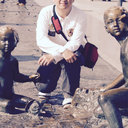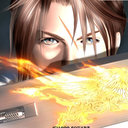Intracystic bleomycin for cystic craniopharyngiomas in children.
Lykilorð
Útdráttur
BACKGROUND
Craniopharyngiomas are the commonest benign histological tumours to involve the hypothalamo-pituitary region in childhood. Cystic craniopharyngiomas comprise more than 90% of the tumours. The optimal treatment of cystic craniopharyngioma remains controversial. Radical resection is the treatment of choice in patients with favourable tumour localisation. When the tumour localisation is unfavourable, a gross-total or partial resection followed by radiotherapy is the main treatment option in adults. However, it presents a risk of morbidity, especially for children. Intracystic bleomycin has been utilised potentially to delay the use of radiotherapy or radical resection, to decrease morbidity. This review is an update of a previously published Cochrane review.
OBJECTIVE
To assess the benefits and harmful effects of intracystic bleomycin in children from birth to 18 years with cystic craniopharyngioma when compared to placebo (no treatment), surgical treatment (with or without adjuvant radiotherapy) or some other intracyctic treatments.
METHODS
We searched the electronic databases CENTRAL (2014, Issue 1), MEDLINE/PubMed (from 1966 to March 2014) and EMBASE/Ovid (from 1980 to March 2014) with pre-specified terms. In addition, we searched the reference lists of relevant articles and reviews, conference proceedings (International Society for Paediatric Oncology 2005-2013) and ongoing trial databases (Register of the National Institute of Health and International Standard Randomised Controlled Trial Number (ISRCTN) register) in May 2014.
METHODS
Randomised controlled trials (RCTs), quasi-randomised trials or controlled clinical trials (CCTs) comparing intracystic bleomycin and other treatments for cystic craniopharyngiomas in children (from birth to 18 years).
METHODS
Two review authors independently performed the data extraction and 'Risk of bias' assessment. We used risk ratio (RR) for binary data and mean difference (MD) for continuous data. We planned that if one of the treatment groups experienced no events and there was only one study available for the outcome, we would use the Fischer's exact test.
RESULTS
We could not identify any studies in which the only difference between the treatment groups was the use of intracystic bleomycin. We did identify a RCT comparing intracystic bleomycin with intracystic phosphorus(32) ((32)P) (n = 7 children). The trial had a high risk of bias. Survival could not be evaluated. There was no evidence of a significant difference between the treatment groups in cyst reduction (MD -0.15, 95% confidence interval (CI) -0.69 to 0.39, P value = 0.59), neurological status (Fisher's exact P value = 0.429), 3rd nerve paralysis (Fischer's exact P value = 1.00), fever (RR 2.92, 95% CI 0.73 to 11.70, P value = 0.13) or total adverse effects (RR 1.75, 95% CI 0.68 to 4.53, P value = 0.25). There was a significant difference in favour of the (32)P group for the occurrence of headache and vomiting (Fischer's exact P value = 0.029 for both outcomes).
CONCLUSIONS
Since we identified no RCTs, quasi-randomised trials or CCTs of the treatment of cystic craniopharyngiomas in children in which only the use of intracystic bleomycin differed between the treatment groups, no definitive conclusions could be made about the effects of intracystic bleomycin in these patients. Only one low-power RCT comparing intracystic bleomycin with intracystic (32)P treatment was available, but no definitive conclusions can be made about the effectiveness of these agents in children with cystic craniopharyngiomas. Based on the currently available evidence, we are not able to give recommendations for the use of intracystic bleomycin in the treatment of cystic craniopharyngiomas in children. High-quality RCTs are needed.




